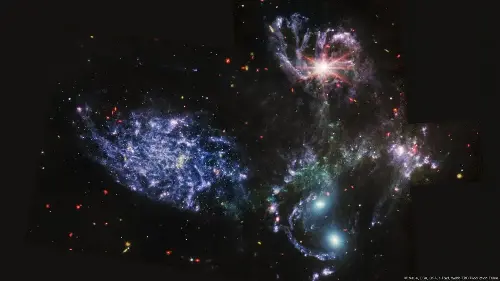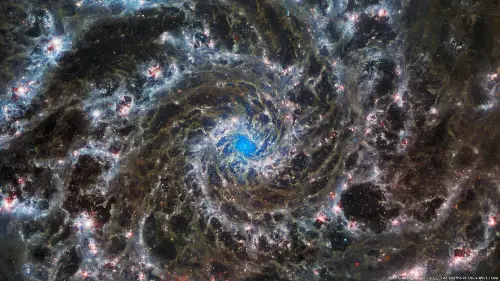
"You may think it's a long way down the road to the drug store," wrote Douglas Adams in his Hitchhiker's Guide to the Galaxy, "but that's just peanuts to space."
Space is big. We live on one tiny planet orbiting a star that's tucked away in the far reaches of a galaxy — just one galaxy of around 2 trillion in the known universe. Space is really really big.
Planet Earth is located in one of the spiral arms of the Milky Way (called the Orion Arm) which lies about two-thirds of the way out from the center of the galaxy.
We know how big the Earth is — 12,756 kilometers (7,926 miles) across. And we know how big our sun is too — about 1,391,000 kilometers (864,400 miles) across.
But how big is the Milky Way? Until now, the true size of galaxies has remained a mystery.
Galaxies are much bigger than we thought
A new study, published in the journal Nature Astronomy, has found that galaxies are far bigger than originally thought, perhaps several times bigger.
The spiraled structure of the galaxy we know is only the smaller core of the galaxy. For the Milky Way, this is about 100,000 light-years across.
The starlight from stars nestled in the spiral arms extend to around 7,800 light-years into deep space, which was thought to be where a galaxy ended and deep space began.
The study has revealed that large "halos" of gas extend from the visible spirals of star light far out into deep space.
These gas halos only became visible to astronomers with new imaging techniques. The methods enabled astronomers to detect galaxy gas halos over 100,000 light years into deep space, vastly increasing our estimations of how big galaxies are.

Kissing galaxies
In fact, the halos of gas from galaxies extend so far into deep space that galaxies actually interact with each other.
The findings suggest that our Milky Way is likely interacting with our closest neighbor, Andromeda — around 2.5 million light years away, according to Nikole Nielsen, lead author of the paper, and a researcher with Swinburne University, Australia.
"We're now seeing where the galaxy's influence stops, the transition where it becomes part of more of what's surrounding the galaxy, and, eventually, where it joins the wider cosmic web and other galaxies. These are all usually fuzzy boundaries," said Nielsen in a press statement.
Scientists say the discovery will help to understand one of the biggest questions in astronomy: how do galaxies evolve?
Studying the gas halos from different types of galaxies — ones that form stars, or those that don't form stars any longer — will help to understand how galaxies build mass over time, and what impact galaxies have on each another when they interact.
Edited by: Andreas Illmer
Primary source:
Nielsen, N.M., et al. An emission map of the disk–circumgalactic medium transition in starburst IRAS 08339+6517. Nature Astronomy (2024). https://www.nature.com/articles/s41550-024-02365-x